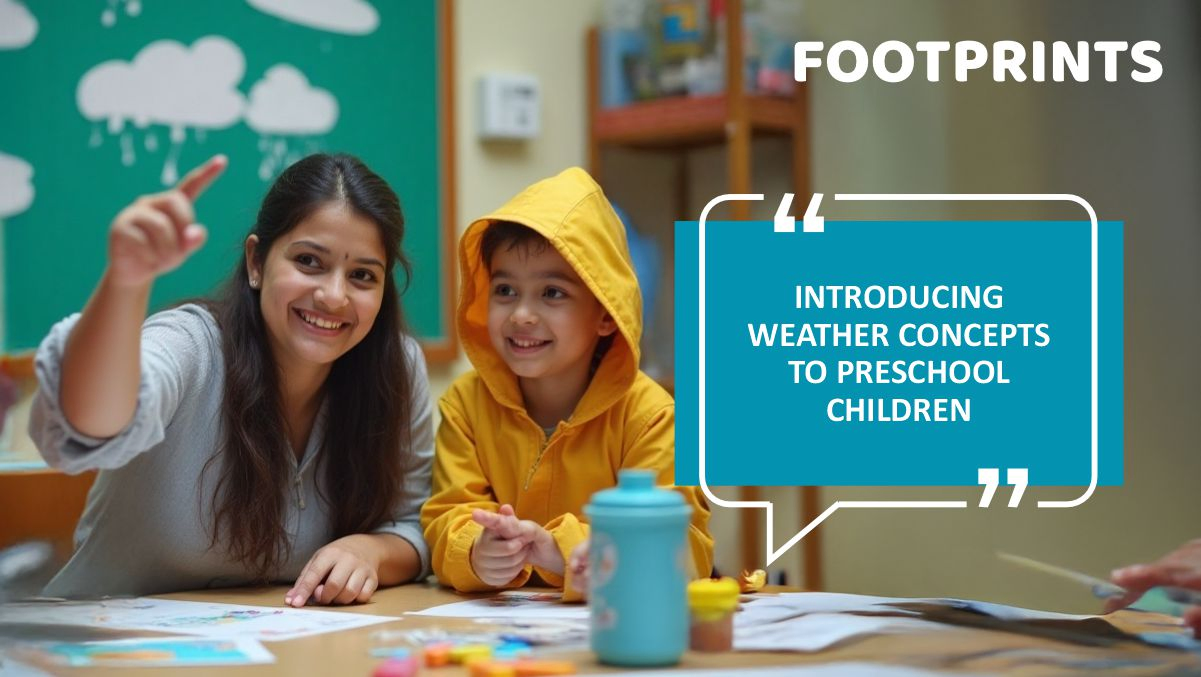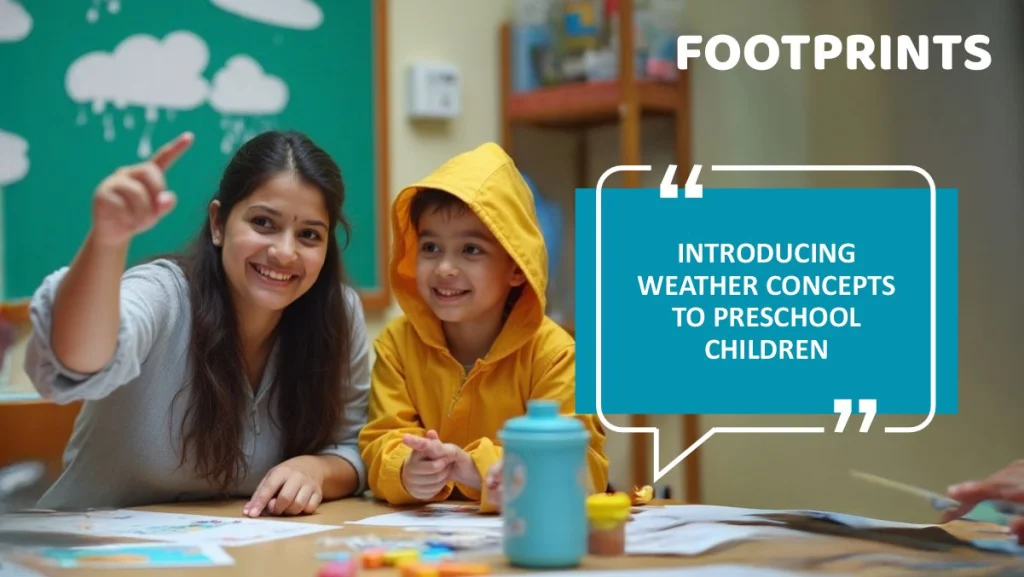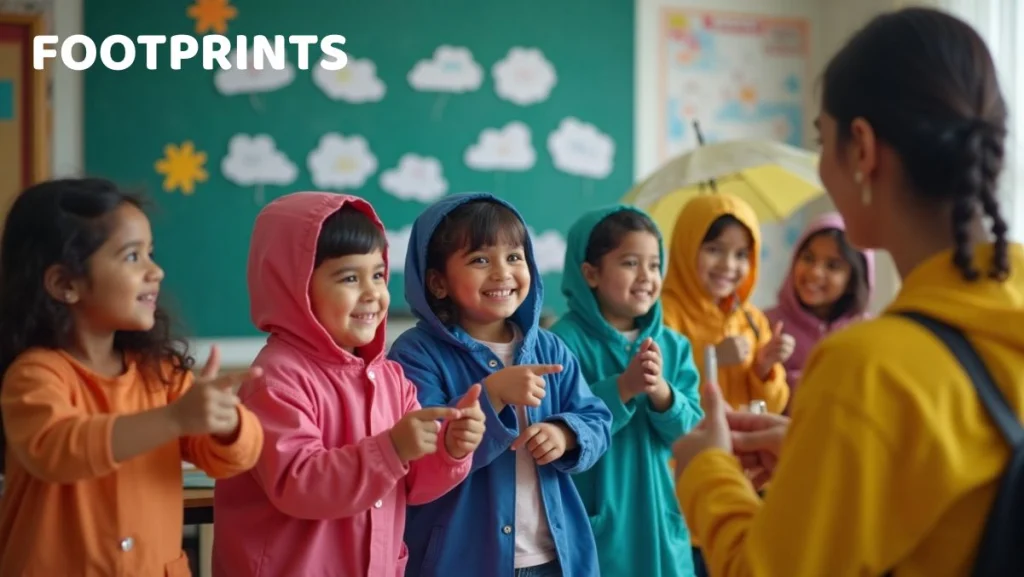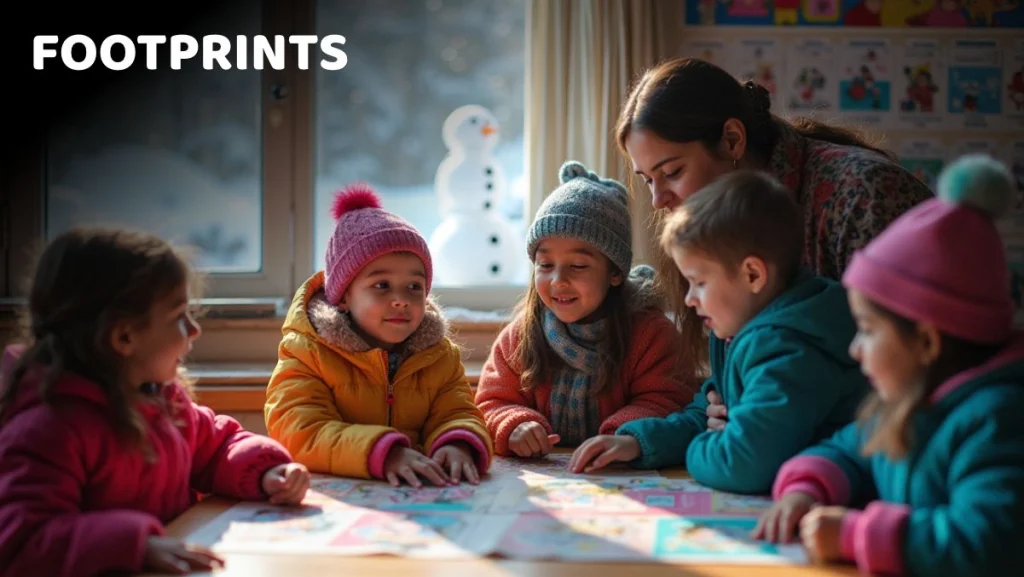

From the pitter-patter of raindrops to the whooshing winds of a thunderstorm, weather touches every part of our lives—whether it’s a scorching summer day or a cozy winter night. And among the most curious to understand this scientific phenomenon are children. Introducing weather into the curriculum at this stage builds foundation knowledge, vocabulary, and observation skills. This blog presents a guide to which we go over how to present weather to preschool age children in an interesting and relevant way which also answers questions they may have like “what is the weather out there?, we also look at the many types of weather and put forth ideas to get children to connect weather to what they do every day. How do children perceive the concept of weather? Let’s start with the basics, weather is an atmospheric phenomenon at a specific time and place. It includes elements like sunshine, rain, wind, snow, and temperature, which we experience every day.
How to Explain It to Preschoolers: Climate is what we can expect to see outside. It can change every day. It sets out what we put on and what we do outside. What Kinds of Weather Are There? Breaking it down. When it comes to introducing the concept of what we have for different types of weather, do so in a simple way at first. Put out there which weather types the children are familiar with from what they see in the everyday world.
Types of Weather to Cover:
1. Sunny: It is a bright day with mostly clear skies.
2. Overcast: The sky is full of clouds, which are covering the sun.
3. Monsoon season, which comes down from the clouds.
4. Snowfall: In cold weather, snow occurs.
5. Windy: Wind is blowing hard, and it’s cool to the touch.
6. Stormy: which includes thunder and lightning or heavy rain.
Let children into the outdoor play or circle time discussions, which in turn will have them identify and name various weather conditions.
Knowing the weather helps children:
1. Decide what to wear.
2. Plan outdoor play
3. Begin exploring Earth science
It also does well for developing vocabulary and observational skills. Talking about the weather outside gets children to see patterns and put forth predictions.

Strategies to Teach Weather Concepts Effectively
At Footprints Playschool, children are engaged to learn best through interaction, storytelling, and hands-on experiences. Here are what we have found to be sure-fire ways to make weather learning fun and memorable:
1. Use the daily weather report charts. Set out a weather board or weather wall. Every day, a child will be the “weather observer,” which will include going out to check the sky and updating the board. Label different kinds of weather with images and words. Include indicators for temperature (hot, warm, cold). Add to your wardrobe what fits the day’s weather.
2. Integrate Songs and Rhymes. Music is also for memory, which in turn has these to use — I am sorry, I tried a different approach. Music is a memory aid, try out such as — It also includes what music does for which here are some: “What’s the Weather Like Today?”
“Rain, Rain, Go Away”
3. Make weather sensory bins. Use sensory items such as water, cotton balls, small fans, and paper snowflakes to create weather patterns. Sensory bins engage and playfully teach through touch.
4. Discover Weather Through Art. Let students paint or draw various types of weather. They may use yellow for the sun, blue for rain, or white cotton for clouds.
At Footprints childcare, we choose age-appropriate picture books such as Cloud at which you will find meatballs by Judi Barrett. Books improve your grasp of what different weather conditions look like. Children immerse themselves in a lesson when they find something relevant to their knowledge or that they can testify to. Help them see how weather plays an important part in what we wear (jackets, boots, hats), what we do (go outside or stay in). What we eat during certain climate change (hot cocoa when the temperature drops or watermelon juice when it gets scorching). The questions can be asked on a regular basis, on every general occasion, i.e. How is the weather today? What should we put on? Add this to your morning routine to form a consistent practice.
1. Check out child-friendly weather apps. Introduce basic apps for weather which present info in real time via visual tools. Children may use the screen content to compare with what they see outside the home.
2. Go for walks in nature. Is it warm? Is the wind blowing? Do we see clouds? We can use simple tools like thermometers and pinwheels.
3. Make Your Own Weather Instruments. Create a rain gauge out of a clear jar or a wind vane which uses paper and straws. These hands-on tools, which also include a barometer for air pressure, introduce measurement and scientific observation.
Weather Related Questions for Children. Preschool children ask a lot of questions, which in turn trigger their curiosity and desire for more learning. It is up to you to answer their what/how/why questions in simple terms.
Question: What causes rain? Answer: Clouds fill with water and release it to the ground.
Question: What causes wind to blow? Answer: Air is all around us, and we feel it.
Question: Where does snow come from? Answer: When it is very cold, rain turns into what we call snow. Stimulate in-depth questioning and guide exploration via stories, experiments, or videos.
To enrich the learning experience and become a topic authority, expand your teaching into these clusters – Weather and Seasons
Teach how the weather changes with seasons
Create a seasonal weather chart – Weather and Clothing
Run a “Dress the Bear” game for all kinds of weather. Extreme Weather Awareness
Introduce storm safety with gentle explanations
Practice for the chance of thunderstorms or heavy rain (no fear). Weather and Emotions
Use weather to explain feelings: At times, we are stormy. This emotional-literacy tie-in supports whole-child development.

Summary
Making weather fun and memorable. Teaching weather to preschoolers is not about complex science; it is about observation, vocabulary, and connection. Use all the chances to get out and see the weather, explain what we mean by different weather patterns and discuss the many types of weather in terms a 3-year-old can relate to.
Key Takeaways: Pay attention to various types of weather that children experience. Use music, visual elements, stories and sensory play. At Footprints Playschool, we build into children a daily routine like weather patterns, which foster learning. We also help expand learning to the real world and emotional growth.
Conclusion
Growing into a Weather-Wise entity. Through the integration of weather education into daily activities, teachers and parents cultivate a lifelong interest in the natural world. Also, early introduction to various weather elements fosters observation, communication, and decision making, which are basic skills for future science study.
Shubham is an SEO expert dedicated to helping businesses to thrive in a digital landscape. His innovative marketing campaigns have significantly boosted the organization’s reach and engagement.

